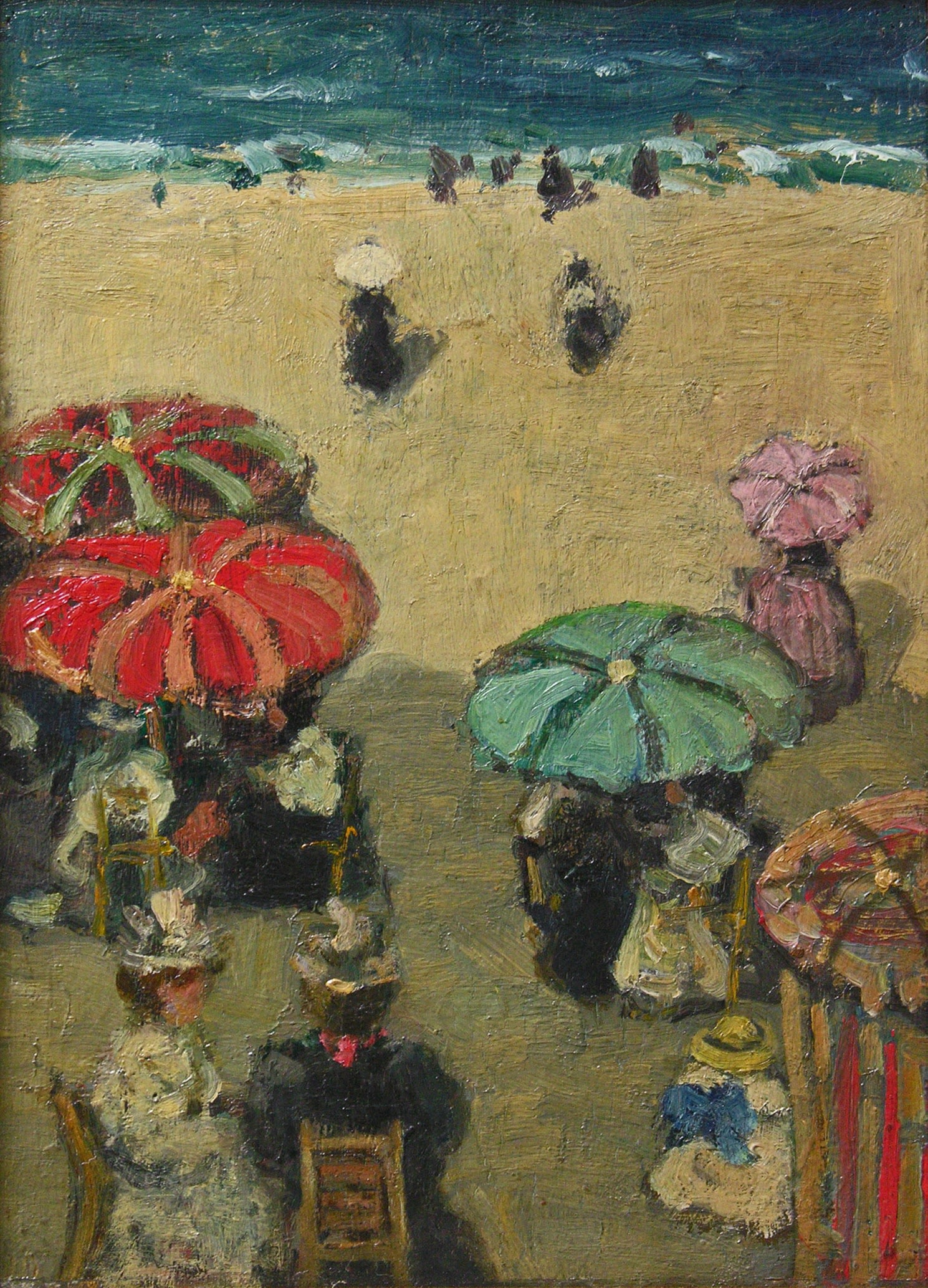''Umbrellas on the Beach, Brittany" (c. 1898) By James Wilson Morrice
Morrice loved to paint the beaches of the world. Before 1900, he used these beaches mostly as backdrops for various human activities: gathering oysters or kelp, drying sheets; more rarely for bathers specifically or people at leisure. It is true that beach resorts were still a recent phenomenon, whose development paralleled that of the railroad; it is the Impressionists that made them popular as a subject, in their eyes wholly representative of modern life. But Morrice, who moved to Paris in 1890, was more interested at that time in Dutch art and Whistler than in contemporary French art.

James Wilson Morrice, Umbrellas on the Beach, Brittany, c. 1898, oil on panel, 13 x 19 in, Private collection, Quebec.
So his leaving Paris "precipitately" to paint “the bathers” of Saint-Malo (Brittany) in early June 1896 (letter to his American friend Robert Henri) comes as a surprise for us; and a disappointment for him: the absence of bathers that early in the season sent him painting to the nearby fishing town of Cancale. A second stay at Saint-Malo in July ended the same way: "The place is becoming tiresome. Outside of the beach there is not much to paint." (ibid.). His Sketchbook #2 (Montreal Museum of Fine Arts) contains mostly drawings of Cancale, but one page shows two tiny women sitting on chairs, seen at a far distance on what looks like a beach. No bathers... In the 19th century, only children and men dared to enter the sea; the women, fully dressed and wearing hats, spent their days under large parasols in these “outdoor living rooms”. Sporting a suntan, especially on the face, was definitely a no-no: it was only good for those who worked outdoors, the peasants.
More sitting women occupy the foreground of this delicious panel, discovered recently; if there are now bathers, they are reduced to small silhouettes. The painting probably represents Saint-Malo, whose dark turquoise water has given the name Côte d'Emeraude to that part of the coast, and where the ramparts offered a convenient vantage point over the beach. But this is not just another beach by Morrice... in fact, it has no parallel in his entire oeuvre. Historically, it might be his first painting of people on a beach; artistically, it is a direct witness to that brief period, which coincided with his discovery of Impressionism and clear colours, when the artist looked for inspiration in Japanese prints. The vertical composition, rare for a beach subject, is clearly inspired by them: view from above with a strong dark tone at the top to flatten the perspective, some elements cut by the frame, all carefully placed on a flat surface. This is especially notable in the upper half, where the bright sand and colourful parasols, which evoke stylized chrysanthemums, attract the eye; to enhance the effect, the "artist with the delicate eye" (as his friend Matisse called him) purposefully left the lower, more descriptive portion, in the shade.
Copyright © Lucie Dorais, 2010
Cite this article:
Dorais, Lucie. “Parasols on the Beach, Bretagne”. Klinkhoff.ca, Alan Klinkhoff Gallery, 19 November 2010, www.klinkhoff.ca/blog/8177/. Accessed [enter today’s date].




